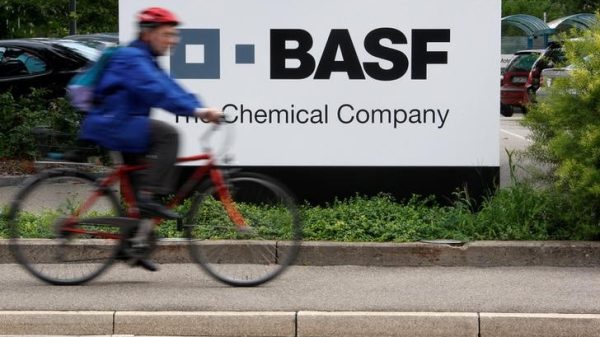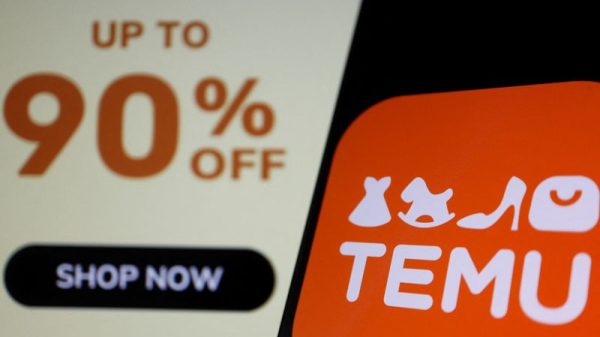Aviat Networks , Inc. (NASDAQ:AVNW), a global provider of microwave networking solutions, disclosed its financial results for the First Quarter of Fiscal Year 2025, revealing a modest revenue increase alongside a decline in profitability.
The company’s revenue edged up to $88.4 million, a 1.7% year-over-year rise, primarily driven by international gains, including significant contributions from the Pasolink acquisition. Despite this, Aviat faced a decrease in non-GAAP gross margin to 23% and reported an adjusted EBITDA loss of $7.7 million, with a non-GAAP EPS loss of $0.87, due to ongoing weakness in U.S. Tier 1 capital expenditures and project timing issues.
CEO Pete Smith noted the challenges but remained optimistic about the company’s growth potential, especially in the private 5G sector and with the upcoming ProVision Plus software transition opportunity.
Key Takeaways
Aviat Networks’ total revenue increased slightly to $88.4 million in Q1 FY2025.
The non-GAAP gross margin decreased to 23%, with an adjusted EBITDA loss of $7.7 million.
International revenue grew by 44% to $46 million, largely due to the Pasolink acquisition.
The company projects full-year revenues between $430 million and $470 million, with adjusted EBITDA of $30 million to $40 million.
Aviat anticipates a $50 million upgrade opportunity from transitioning Pasolink customers to its ProVision Plus software.
The company received its first order for the Aprisa 5G router from a U.S. utility.
Gross margin improvements are expected in Q2 due to better project mix and software revenue normalization.
Aviat’s outstanding debt at the end of Q1 was $81 million, primarily from acquisitions and negative pre-tax earnings.
Company Outlook
Aviat adjusted its fiscal year 2025 guidance, expecting revenue between $430 million to $470 million.
Adjusted EBITDA is projected to be between $30 million and $40 million.
Management anticipates a healthy backlog and growth in bookings, leading to stronger results in Q2 and the second half of FY2025.
Bearish Highlights
Non-GAAP EPS showed a loss of $0.87 due to weak U.S. Tier 1 capital expenditures and project delays.
The company reported a book-to-bill ratio greater than 1 but faced a $14 million revenue drop in the U.S., split between Tier 1 operator challenges and state project delays.
Bullish Highlights
International revenue increased significantly, with a 44% rise to $46 million.
The company sees a strong opportunity in the private 5G sector and significant demand in India.
Fixed wireless access is expected to be a key growth driver, with connections projected to grow by 17% annually.
Misses
Q1 gross margin fell to 23.2%, with a non-GAAP EPS loss of $0.87.
Merger and acquisition expenses were $4.4 million in Q1, although these are expected to decrease in Q2.
Q&A Highlights
CEO Pete Smith discussed the potential for a “V-shaped recovery” driven by the Pasolink transaction and improved bookings.
The company is confident in the growth of the private network sector and the global 5G market, especially in emerging economies.
Management addressed the $4.4 million merger and acquisition expense, expecting normalization in the latter half of the year.
In conclusion, Aviat Networks is navigating a challenging market environment with resilience and strategic focus. The company’s leadership remains confident in its ability to recover from first-quarter setbacks and capitalize on emerging opportunities in the 5G and private network sectors. Investors are looking forward to the next update in 90 days, as Aviat Networks continues to work towards a promising future.
Full transcript – Aviat Networks Inc (AVNW) Q1 2025:
Operator: Good afternoon, welcome to Aviat Networks’ First Quarter Fiscal 2025 Earnings Call. At this time, all participants are in a listen-only mode. A question-and-answer session will follow the formal presentation. Please note this conference is being recorded. I will now turn the conference over to your host, Mr. Andrew Fredrickson, Director of Investor Relations. Thank you. You may begin.
Andrew Fredrickson: Thank you and welcome to Aviat Networks first quarter fiscal 2025 results conference call and webcast. You can find our press release, an updated investor presentation in the IR section of our website at www.aviatnetworks.com along with a replay of today’s call. With me today are Pete Smith, Aviat’s President and CEO, who will begin with opening remarks on the company’s fiscal quarter, followed by Michael Connaway, our CFO, who will review the financial results for the quarter. Pete will then provide closing remarks on Aviat’s strategy and outlook followed by Q&A. As a reminder, during today’s call and webcast, management may make forward-looking statements regarding Aviat’s business, including but not limited to, statements relating to fiscal guidance, financial projections, business drivers, new products and expansions, and economic activity in different regions. These and other forward-looking statements reflect the company’s opinions only as of the date of this call and webcast, and involve assumptions, risks, and uncertainties that could cause actual results to differ materially from those statements. Additional information on factors that could cause actual results to differ materially from the statements expressed or implied on this call can be found in our most recent annual report on Form 10-K filed with the SEC. The company undertakes no obligation to revise or make public any revision of these forward-looking statements in light of new information or future events. Additionally, during today’s call and webcast, management will reference both GAAP and non-GAAP financial measures. Please refer to our press release, which is available in the IR section of our website, at www.aviatnetworks.com, and financial tables therein, which include a GAAP to non-GAAP reconciliation and other supplemental financial information. At this time, I would like to turn the call over to Aviat’s President and CEO, Pete Smith. Pete?
Pete Smith: Thanks, Andrew, and good afternoon. Let’s discuss Aviat Networks first quarter of fiscal year 2025. Total (EPA:TTEF) revenue of $88.4 million with non-GAAP gross margin of 23%. Adjusted EBITDA of minus $7.7 million. Non-GAAP EPS loss of $0.87. As we previewed in our last earnings call, we expected the results in our fiscal Q1 to be difficult. In the quarter, our team dealt with the revenue impact from ongoing US Tier 1 CapEx weakness as well as timing challenges from both private network and international projects. Additionally management faced the priority of closing out the year-end audit and completing our SEC filings throughout the quarter which distracted from our execution. To provide some additional perspective for investors, the global microwave market saw an 8% year-over-year contraction in the most recent quarter based on industry research firm Dell (NYSE:DELL)’Oro. This is the fourth consecutive quarter of overall microwave revenue declines. The market softness has been driven principally by mobile network CapEx declines. Aviat has been able to avoid the impact of the broader market decline until recently, thanks to our private network business and our share gain funnel. However, in the most recent quarter, we were unable to offset the Tier 1 weakness. Nonetheless, we have seen in the FCC (BME:FCC) coordination filings that Aviat has continued to grow its share of demand in North America and outperform the market. Aviat has grown its share of demand in the microwave space globally in recent quarters and over the past several years. We believe we have the best all outdoor radios on the market, including a portfolio V-Band and multi-band solutions that are unmatched. We also lead in all indoor solutions as is evidenced by our new state private network win and have a competitive split-mound offering for international customers. Our access solutions are strong and highly penetrated in the certain segments we serve. Gross margins were significantly impacted by lower volume and by mix shift away from North America and towards our international business. Based on our revenue and profitability, we aggressively managed our operating expenses and continue to do so where possible. We expect that our Q2 operating expenses will be lower than Q1. As a reminder, we currently have some higher operating expenses associated with our preparation for the stoppage of transition services with NEC over the next two quarters. We anticipate that the back half of fiscal year 2025 will see more favorable operating leverage for Aviat. Moving on to product and customer updates. Last quarter, we discussed our growing opportunity of selling Aviat network management software ProVision Plus to Pasolink product customers. To provide more color to investors, we believe that this will be a $50 million upgrade opportunity over the next five years. There are over 1 million Pasolink radios installed across 500 plus customers today. Moving these customers to ProVision Plus represents a significant upgrade for them in terms of usability and features over the prior NMS software they had access to. For Aviat, this is an attractive opportunity to grow our software revenues and further demonstrate our focus on offering value-add products and services to those customers acquired as part of the Pasolink transaction. Our Aprisa product line, which was acquired in the 4RF transaction, recently notched its first purchase order for our Aprisa 5G router to an American utility company in the Southwest. This is an exciting development in the growth of Aviat’s private 5G business. I’ll also mention that we’re already realizing cross-selling revenues from the 4RF acquisition. As a reminder, approximately 90% of our combined private network customers are non-overlapping. Additionally, recent events such as the cyber-attack against America’s largest water utility highlight the criticality of having secure private networks with trustworthy and dependable hardware for infrastructure providers. Just as we see a long upgrade cycle in public safety networks, we expect there will be a significant investment cycle in grid and utility infrastructure modernization. As proof, we are already engaged in projects with two Midwestern electric utilities that have selected our Aprisa access products as part of their network upgrades and modernizations. These two contracts total more than $8 million and are expected to begin shipping products by the end of this calendar year. We’re pleased with how the 4RF tuck-in acquisition has progressed to date and expect to have more good news to report in the quarters ahead. Lastly, we’re beginning plans to transfer the manufacturer of Pasolink products from NEC’s in-house manufacturing in Japan to Aviat’s contract manufacturer. We believe that this transfer will enable Aviat to more quickly and efficiently manage orders and inventory relating to Pasolink products and over time result in lower overall costs and better gross margins. As a result of this manufacturing move and to ensure continued service to our customers, we anticipate and have already begun building an inventory stock of Pasolink products on the order of $20 million to $25 million. We expect that this inventory will subsequently be worked down over the next 18 months. Before coming back for some additional comment on our outlook, I will turn it over to Michael to review the financial results of the quarter.
Michael Connaway: Thank you very much, Pete, and good afternoon, everyone. I’ll review some of the key fiscal 2025 first quarter results. Please note that our detailed financials can be found in our press release. And all comparisons discussed are between the first quarter of fiscal year 2025 and the first quarter of fiscal year 2024, unless otherwise noted. For the first quarter, we reported total revenues of $88.4 million, as compared with $86.9 million for the same period last year, an increase of $1.5 million or 1.7% year-over-year. North America, which comprised 48% of our total revenue for the quarter was $42 million, a decrease of 23% from the same period last year due to Tier 1 softness and timing of certain large projects in our private networks business. International revenue was $46 million for the quarter, an increase of $14 million or 44% from the same period last year. This growth was driven primarily by the addition of revenues from the Pasolink acquisition. Our trailing 12-month book-to-bill was over 1 in the quarter. Gross margins for the quarter were 22.4% on a GAAP basis and 23.2% on a non-GAAP basis. This compares to 35.9% GAAP and 36.2% non-GAAP in the prior year. The decline in our gross margins was driven principally by two items. First, lower overall volumes worked against us from a period cost and operating efficiency standpoint. And secondly, we had a mix shift away from higher margin projects and regions in the quarter. We expect some of these factors to begin normalizing in the quarters ahead. Fourth quarter GAAP operating expenses were $35.4 million, an increase of $9.1 million from the prior year driven by the addition of Pasolink and 4RF related OpEx and increased R&D expenses as we prepare to end Pasolink-related transition services with NEC. Non-GAAP operating expenses, which exclude the impact of restructuring charges, share-based compensation and deal costs were $30 million, an increase of $6.2 million, driven by Pasolink, 4RF and increased R&D costs. In the first quarter, we analyzed and reviewed expenses and headcount to ensure that we are aligned with the current demand environment. There is still work ongoing here, and we expect to show continued progress on cost-out and improved earning results as the year progresses. Fourth quarter operating income was minus $15.6 million on a GAAP basis and minus $9.5 million on a non-GAAP basis. The first quarter tax provision benefit was $5.5 million. As a reminder, the company has approximately $450 million of net operating losses, or NOLs, that will continue to generate shareholder value via minimal cash tax payments for the foreseeable future. First quarter GAAP net income was minus $11.9 million, and non-GAAP net income, which excludes restructuring charges, share-based compensation, M&A-related, and other non-recurring expenses, and the non-cash tax provision was minus $11.1 million. Fourth quarter non-GAAP earnings per share came in at minus $0.87 on a fully diluted basis. Adjusted EBITDA for the first quarter was minus $7.7 million. This was impacted by the lower gross margins and elevated OpEx in the quarter. Moving on to the balance sheet. Our cash and marketable securities at the end of the first quarter were $51 million. In the quarter, we pulled down our revolving loan facility, bringing our outstanding debt to $81 million at the end of the quarter. The consumption of cash was driven primarily by our purchase of 4RF and negative GAAP pre-tax earnings in the quarter. With that, I’ll turn it back to Pete for some final comments. Pete?
Pete Smith: Thanks, Michael. The first quarter was challenging. Tier 1 market weakness, project timing, and execution combined to create results below our expectations. We remain optimistic that we’ll see stronger results based on our current view of Q2 and the back half of fiscal year 2025. Based on the company’s most recent results, we’re adjusting our fiscal year 2025 guidance as follows. Revenue to be in the range of $430 million to $470 million, and adjust EBITDA to be in the range of $30 million to $40 million. We see reasons to continue believing in Aviat’s private network business and the global 5G opportunity. Our funnel and backlog remain attractive and the conversations we’re having with our customers are encouraging. Our bookings are growing and exceeded revenues in the first quarter. Aviat has gained share of demand over the last several quarters despite a down market and we see no reason to believe that this will change. With that, operator, let’s open up for questions.
Operator: [Operator Instructions] Our first question is going to come from the line of Jaeson Schmidt with Lake Street. Your line is open. Please go ahead.
Jaeson Schmidt: Hey guys, thanks for taking my questions. First want to start with gross margin, obviously soft in September, but can you help us think about the trajectory and I guess more so how big of a snap back can it have in the December quarter?
Michael Connaway: Yeah, sure. Yeah, let’s talk about Q1 first, so our gross margins on an on-GAAP basis were 23.2%. We’re not going to break out Pasolink separately moving forward, but we would say that the margins in Pasolinkwere solid in the first quarter. So the majority of the erosion in margins was in the core business. And there were really three reasons for it, mostly mix-related. First, our America’s business, which typically trades at the highest gross profit rate, had a lower revenue quarter. And on a year-over-year basis, most of those revenues were replaced and augmented by APAC, which mixes us down from a gross profitability perspective. That was one. Second, we also had a weaker software outcome, principally in the US. We think that this effect will normalize in 2Q and the back half. And then lastly in the first quarter we’re dealing with some margin timing effects on hardware revenues on one of our large APAC customers which we also expect to attenuate as we move through the year in 2025. So in terms of the rest of the year, we see those three things certainly improving. So Q2 will be a nice step-up versus Q1 in terms of gross profit margins. And then Q3 and Q4 as the revenues ramp will get a little bit of leverage on the period cost component inside a gross profit margin. So we see margins getting back to a more normalized rate in Q2, Q3, Q4.
Jaeson Schmidt: Okay, that’s really helpful. And then just as a follow-up, I mean, it seems like September is really the primary driver for the downward adjustment to the full year outlook. I mean, just given the whole September starts in, I mean, it’s going to be a pretty sizable ramp sequentially, December through June. And I know you had expected that previously. It’s just curious if you could provide some additional color on kind of what gives you this confidence and then relatedly how orders have been tracking for the first kind of month plus of the December quarter.
Michael Connaway: Yeah I’ll give a couple of data points. So maybe just the guidance first. So we lowered the midpoint of the revenue guidance by $20 million and then earnings by $14 million. From a revenue standpoint, about half of the reduction is driven by Q1. About — the other half is really just a little bit of a rerate in market expectations, primarily driven by Tier 1 spending softness. So that’s kind of the guidance piece on the earnings side. You kind of half of the guidance retrogression was driven by taking down the volumes and then most of the remainder is all 1Q. As it relates to the orders we had a book-to-bill greater than 1 in the first quarter and then Q2 is shaping up to be even stronger than Q1. And we’ve had a nice first month. So the orders trajectory is better.
Pete Smith: Yeah. Jaeson, to comment on the orders trajectory, if things were to hold together, we would have record bookings in the December quarter. So, look, we want to own up to the late 10-K and the impact that that had on us and the disappointment we have in the quarter that ended in September. But we see a — we see demand bouncing back and we are encouraged.
Jaeson Schmidt: Okay, that’s really helpful. Thanks a lot, guys.
Operator: Thank you. One moment for our next question. Our next question is going to come from the line of Scott Searle with Roth Capital Partners (WA:CPAP). Your line is open. Please go ahead.
Scott Searle: Hey, good afternoon. Thanks for taking the questions. Hey, Pete, Mike, maybe just to follow up on Jaeson’s question. If you look at your guidance, it kind of implies on average $115 million to $125 million over the remaining three quarters of the fiscal year. Can you talk us through a little bit? It sounds like orders are coming back. Maybe by geography, APAC was weak again. Maybe how India was within that. It sounds like there’s some private networks building in the pipeline as well. Just trying to really get our hands around how that recovery comes back. Why is there such a strong level of confidence in the snapback in the December quarter and sustaining that in March and June?
Michael Connaway: Look, our book-to-bill over the past four or six quarters has been, let’s say, 1.05, and in this quarter we just concluded, it was higher than that. Our — when we look at our bookings, we see the Pasolink demand building sequentially. We will be owners of the business on a full year basis, but we had to start up. So we see, meaning, we started up, we didn’t hit a home run out of the chute, but we’ve seen steady increases quarter over quarter and we see that persisting at least a few more quarters. So that is helping us. And we, on the private network side, our funnels in the East are good, Eastern US. Our funnels in the west are improving. So that’s kind of the basis for why we are bullish given we’re bullish on demand. We’re disappointed in where we ended in September, Scott.
Scott Searle: Got you. No, very helpful. And maybe to follow up on your comments on Pasolink, Pete. It sounds like that continues to build. Are you getting to — are you starting to see visibility to the levels that you originally anticipated when you acquired this business of that $30-plus-million type range? Is there enough activity going on there now that we’re starting to hit that, I guess, kind of breakpoint where this should, in theory, with better gross margins, start to be nicely accretive in line with your original expectations?
Pete Smith: Yeah. So, it was accretive this quarter, and we think it will be more accretive going forward. When we bought it, we thought we could get it to $140 million. So that would be divided by four, a $35 million a quarter run rate. We’re getting increasingly confident that we will exit FY ‘25 at that rate. So, the past, talking with Michael and Andrew, we want to get a little bit more highway behind us, but I think we will, maybe two quarters, three quarters from now, we’ll come out and we’ll discuss what the returns are on that investment. But we are encouraged, right? So where we’ve underperformed has been in the core. We understand the US Tier 1, and we had project timing issues with the public safety and utility business, which we see reversing as we go forward this fiscal year.
Scott Searle: Great. Very helpful. And if I could just maybe two last follow-ups. Any updated thoughts in terms of India, what you’re seeing there, the demand profile? And then there’s been chatter within the industry, I think, about some MDU opportunities. I’m wondering if you had any thoughts or comments on that front. Thanks.
Pete Smith: Okay. So India is still a growth area. It’s lumpy, and we see the RE band solution as having continued traction. And my plan is to go to India before the ROTH shows, so when we go to the ROTH conference, we can give an India update. But where things are with respect to India is, the India demand environment is still good. It varies from quarter to quarter. Our E-Band and multi-band solutions are good. And then what I would also say, in our prepared remarks we talked about the ProVision Plus network management software for the Pasolink platform. And the Pasolink is incumbent at one of the two biggest operators in India, and we think that that’s going to be a chance probably six to nine months from us. And then with respect to the MDU, this is because the reason you bring this up is that a certain US Tier 1 says a new, on their earnings call, a new MDU solution that’s been in trial will be rolling out to serve MDUs and we are not in the pole position there but we will have an opportunity to get some business out of that. It may be zero, but it may be something significant. And should we be chosen, we will certainly broadcast that widely.
Scott Searle: Great. Thanks so much.
Operator: Thank you, and one moment for our next question. Our next question is going to come from the line of Theodore O’Neill with Litchfield Hills Research. Your line is open. Please go ahead.
Theodore O’Neill: Okay. Thanks very much. Pete, I was wondering if you could talk a bit about the opportunity in fixed wireless access. There’s a lot of chatter in the industry about it and sort of go over what products you’ve got that serve that, what band it is, whether it’s an urban, suburban, where the markets lay in that sort of thing.
Pete Smith: Okay. So, you’re right. There’s a growing sense that fixed wireless access is a significant driver of growth in 5G networks. There is increasing fixed wireless access connections. When those connections are made, it’s favorable for backhaul needs. And here’s a little bit of data. The average mobile user data consumption is about 20 gigabits per month. The average fixed wireless access data consumption is 300 gigabits per month. The fixed wireless access connections are expected to grow annually 17%. And that’s really driven by the data consumption. And it’s actually more important in emerging economies. And just to do the density in rural and suburban environments, it’s certainly an attractive way to make the consumption. And then to link this back to Scott’s question about the MDU, we may or may not win MDU projects, but what MDU stands for is multi-dwelling unit. It’s a three-letter acronym. It used to be called departments. And what happens is to get the connectivity with the bandwidth there. Tier 1 operators are looking at putting in wireless solutions and whether or not Aviat wins something in the MDU side, it creates more fixed wireless access and it creates more backhaul and that’s good for us.
Theodore O’Neill: Okay, and for Mike, a financial question here on the merger acquisition and other expense in the quarter of $4.4 million. You don’t expect anything like that to be in the upcoming quarter, do you?
Michael Connaway: No, those will attenuate as we move through the year. Unless we do something incremental from an M&A standpoint. But at this point, absolutely, Q2 will be significantly less than Q1. And then Q3 and Q4 should be down as well to more normalized levels.
Theodore O’Neill: Okay, thanks very much.
Operator: [Operator Instructions] And our next question is going to come from the line of Tim Savageaux with Northland Capital Markets. Your line is open. Please go ahead.
Tim Savageaux: Hey, good afternoon and thanks. A couple of questions. First, I think, I guess you said you weren’t going to break out Pasolink directly anymore, but I wondered if you could say if it was up in fiscal Q1 versus the June quarter.
Michael Connaway: From a revenue and gross profitability standpoint, gross profitability was about the same sequentially and revenues were up a little bit.
Tim Savageaux: Okay, I’m sorry — I am, but I think I’m going to miss the end of that answer there. Revenues were what?
Michael Connaway: Up a little bit. Gross profits about the same. Revenues up a little bit.
Tim Savageaux: Okay, up a little. Great. And if we look at the performance in the US in fiscal Q1, it’s pretty similar whether you look at last quarter or last year. But I wonder if you can kind of categorize that weakness, $14 million or so, by I think the two primary factors that you mentioned, Tier 1 and state push-outs, and give us a sense of kind of how those parts are moving around.
Pete Smith: Yeah, I mean, you’re right. Roughly about half and half Tier 1 versus push-outs and then the visibility into the backlog push-outs and sequential mix effect in Q2 as the US comes back a little bit is another leg of the stool in terms of more confidence in gross profit margins getting better sequentially.
Tim Savageaux: Okay, great. And that’s kind of where I was headed next, which is, to the extent, Pete, you’re looking for a record booking quarter, I think you mentioned a couple of factors. But is it principally, I don’t know if that’s bookings or revenue, but the state — the pushes in the state projects coming back a little bit or are there any other factors in Tier 1 land either in the US or internationally driving that?
Pete Smith: I would say Tier 1 internationally looks favorable from a quarter over quarter perspective. The push out or the not finalizing frequencies or finalizing a private network design, that’s already in our bookings. So that wouldn’t incrementally add to our bookings. So we see a strong North America bookings environment after a lull and we do see international Tier 1s, has growing and I would say we are still in between projects with our US Tier 1.
Tim Savageaux: Okay, good. And that’s kind of where I wanted to finish, which is, I guess most of the data points, even on the wireless side, that I haven’t — we’ve been seeing recently are actually not that bad. And I know your business, might lag the cycle in certain ways with regards certainly to maybe base station installation. I’m not sure whether that’s the case relative to network densification, which is kind of most of what appears to be going on now. But I wonder if you can just sort of discuss that at a high level, which is the way in which your business tracks, higher level spending trends among big wireless operators and to the extent that’s starting to turn up now, would you expect an impact down the line for Aviat?
Pete Smith: Yeah, so through this cycle, we’ve — before this quarter, it was like, how come you’re not impacted by the CapEx cycle? How come, right? So part of it was we’re half private networks. And I think the second — the other part of this is we are a late cycle. So we didn’t go down and now we have taken our contraction. And I think the advantage we have in bouncing back and not having to move backups slowly is the Pasolink transaction, the customers that we have exposure there are growing for us. So absent the Pasolink transaction, maybe we’d have a couple quarters of down, but we see that the exposure to those Tier 1s is being favorable and driving about, let’s call it a V-shaped recovery, to use an economist’s word, or rather rapid bounce back. So I would say private networks is steady and we have the US issue and internationally Tier 1s, driven by Pasolink is favorable.
Tim Savageaux: Okay, thanks very much.
Operator: Thank you. I would now like to hand the conference back to Pete Smith for closing remarks.
Pete Smith: So, thanks to our investors for listening in. We’re working to put the late 10-K and the challenging first quarter behind us. We see positive signs with respect to bookings. We’re looking forward to updating you on progress in 90 days. Thanks, everyone.
Operator: This concludes today’s conference call. Thank you for participating. You may now disconnect.
This article was generated with the support of AI and reviewed by an editor. For more information see our T&C.





























